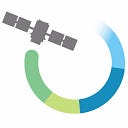Satellite Analytics towards an ESG Shaped Future
If there’s one thing that the Covid-19 crisis has taught me, it is that businesses can no longer focus only on short term financial returns. It behoves the board of directors to anticipate and prepare to adjust to the world of mounting risks and uncertainty from unsustainable practices.
At present, most of the large investors have the stance of shifting towards business models that promote sustainable development. Currently, many Asset managers in the world are making progress by incorporating Environmental, Social and Governance risks in their investment decision making. To be precise over 80% of the investors have indicated that ESG factors will influence their decisions more than financial statements while 78% of Asset owners say that they have already started integrating ESG into their investments.
However the resulting impact from companies around the world is still insufficient for a significant sustainable transformation. One major factor which slows the progress in this context is the lack of good quality data to measure the social and environmental behavior of companies.
Loopholes of Currently used Data
Asset level data which are currently being used to assess and quantify ESG risks are often self reported or gathered through a variety of third party sources such as public and private research institutions, proprietary and non-proprietary databases,company disclosures in financial markets and academic research. These data are habitually considered to be of poor quality in terms of both coverage and accuracy.
Based on these data sources, companies often gather outdated data and move forward with reactive ESG reporting which results in Voluntary Reporting. Consequently companies will choose to report only on positive impacts. Furthermore, different companies will choose to disclose metrics in a variety of different ways not allowing the reporting to be comparable. Thus it will create challenges in interpreting and comparing between companies in the perspective of Investors.
Satellite Analytics at RS Metrics to bridge the Inconsistencies
Satellite data and its derived analytics is undoubtedly a powerful source which provides undeniable facts about environmental performance. It attempts to report beyond a third party data source or company report itself. And thus satellite image derived information and analytics have now become an important source of sustainable investing.
RS Metrics has developed its own Environmental, Social and Governance (ESG) product ESGSignals, which can be used to visually observe the impact of a firm’s Environmental and Social performance based on satellite analytics. ESGSignals not only provide sustainable investors with a comprehensive picture of how businesses and industries are impacting the environment, but also how environmental changes are in turn affecting them.
RS Metrics ESGSignals platform provides a variety of ESG metrics derived from satellite analytics that monitor, measure, and create objective benchmarks for environmental impact by asset location. Metrics are aligned with UN SDG and based on materiality by industry defined by commonly accepted SASB Framework. Commonly tracked physical risk metrics for each location include Emissions, Land Usage, Water Stress, Fire Risk, and Renewable Energy Usage.
What is Unique about RS Metrics ESGSignals Platform?
In the arena of sustainable investing, what companies mostly demand for is reliable data and analytics. The data and analytics derived through satellite imagery at RS Metrics provides a real time and independent view of the environmental performance of an entity.
Here’s what is unique about the RS Metrics ESGSignals Platform:
Reveals the Ground Truth : The Bird’s Eye View doesn’t Lie! The prime feature of satellite imagery and analytics is that they reveal the ground truth. The finest example is how the satellite imagery driven analytics showed the plummeting levels of nitrogen dioxide during the COVID 19 lock-down period. Likewise the verified information on aforementioned metrics along with bias free insights on ESG related issues are provided through this platform.
Real Time and Proactive : One major loophole that was highlighted in using third party sources or self reporting was the obsolete nature of data. Such data weakens informed decision making. However ESGSignals Platform provides Real Time benchmarks on ESG factors across the value chain of a product.
Objectivity : A key short-fall identified in ESG ratings is that a particular company’s ESG score differs significantly between several ESG rating providers which use traditional data sources.Overcoming this issue, Satellite analytics provide highly objective and credible insights in this context.
Scalability : RS Metrics monitored ESG Metrics are highly scalable. The data on each metric can be used to assess the physical, transition and reputational risk and can be aggregated by location, company, regional or global level suiting a variety of needs.
Conclusion
Any ESG Criteria is generally defined to help investors to determine and assess “unmeasured” or “unpresented” environmental, social or governance risks in making investment decisions. Evidence shows that traditional sources of data fail to capture ESG exposure comprehensively. Thus it is vital for the companies to explore the new dimensions of ESG investing through alt-data such as the metrics provided through ESGSignals platform which provides accurate, real time and objective asset level data. The platform can dramatically enhance the ability of investors, regulators, governments and civil society to measure diverse domains of environmental risks, opportunities as well as impact.
To learn more about RS Metrics and ESGSignals please visit our website .You can also follow recent developments on Twitter , Facebook and LinkedIn.
Written by Kethmi Hettige
